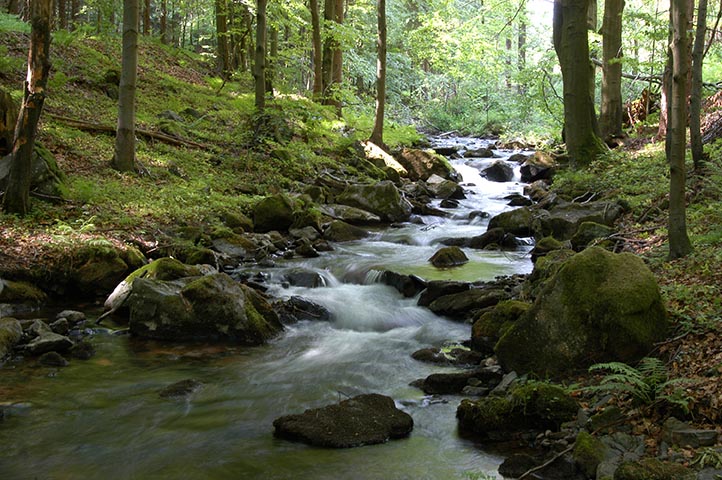 Forests are essential to maintaining quality water for all living things. They minimize soil erosion, and in the process, reduce sediment in ponds, lakes and streams while filtering pollutants.
Forests are essential to maintaining quality water for all living things. They minimize soil erosion, and in the process, reduce sediment in ponds, lakes and streams while filtering pollutants.
Rainfall in the forest is dispersed in many directions, performing many functions. First among the forest’s canopy before reaching the forest floor, then with the soil before runoff enters streams and rivers, or groundwater recharge.
Most of it enters the soil where nutrients are imparted to soil particles, used by organisms, or accumulated in the vegetation.
Rainfall absorbed by roots circulates through the plant and is returned to the atmosphere in a process called transpiration, eventually contributing to clouds and rainfall to continue the water cycle.
Remaining water percolates through and is released from the soil providing water for stream flow or groundwater recharge.
Managed working forests utilizing best management practices aid to maximize the natural benefits of forests in providing optimum water quality. Healthy forests not only help improve water quality and supply, but also extend the benefits of wood, fuel and food, wildlife habitats and cultural qualities such as aesthetics, education, and recreation. Forests also act as a buffer against storms, slowing the rise of streams and minimizing flooding.
Follow the Bird & Crawford Forestry ecard news in coming weeks as we focus on more of the many different benefits of working forests and their importance in forest sustainability.
Bird & Crawford Forestry can assist in planning and reaching your forestland goals, including how working forests can be a part of that plan.



